Choosing the right medium dog collar size is crucial for the comfort and safety of your furry friend. In this section, we will explore the importance of selecting the correct size, as well as provide an overview of the MECE framework and its role in categorizing data.
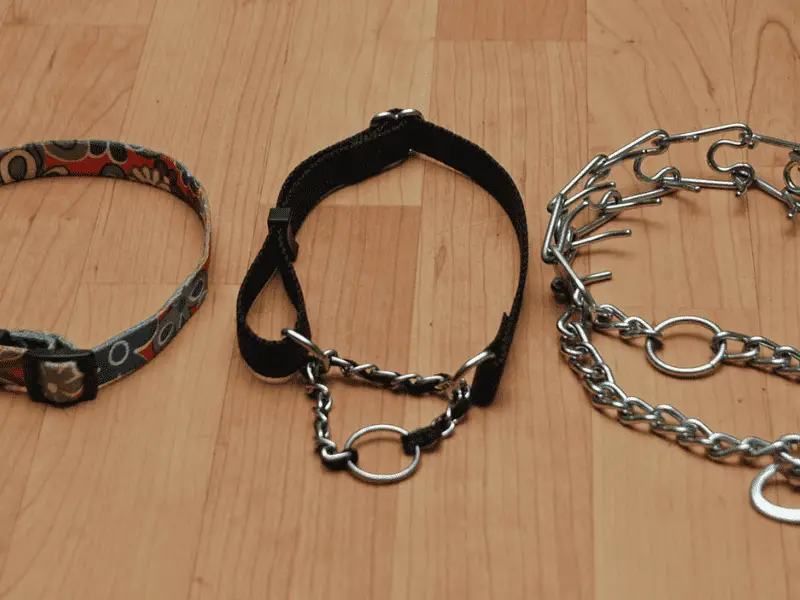
From ensuring proper fit to organizing information effectively, this introduction sets the stage for a comprehensive understanding of how to determine the perfect medium dog collar size.
Importance of Choosing the Right Size Dog Collar
Choosing the perfect size for your pup’s collar is a must! An ill-fitted one can cause harm and irritation. Understanding the correct size for your fur baby is a must!
Various methods to measure your doggo’s neck are outlined in the article. A cloth seamstress tape measure or a string with a rigid ruler will help determine the right size of the collar.
Age and breed should be considered when choosing the size. Puppies need smaller sizes, while fully grown dogs require different sizes. Breeds may have unique considerations for collar sizing, which should be taken into account.
Reference data and retail guides provide great help in figuring out the right collar size. The American Pack Dog Collar Size Chart and Mimi Green Dog Collar Sizes provide info on sizes available. The DogIDs Sizing Guide offers complete information to size your canine companion’s collar.
Choose the right size collar to prioritize your pup’s safety and well-being. An ill-fitting collar can lead to discomfort or even injuries. Knowing and using proper sizing techniques is a must for all responsible dog owners.
Let’s get started on finding the right size collar for Fido! Grab your measuring tape and let’s get going!
Overview of the MECE Framework and Its Use in Categorizing Data
The MECE Framework stands for Mutually Exclusive and Collectively Exhaustive. It is used to structure data in a logical way. This framework is used in various fields for data categorization and decision-making.
For example, the American Pack Dog Collar Size Chart in Section 5.1 of the reference data. It offers three distinct sizes: small, medium, and large. Each is mutually exclusive and covers all possible sizes. The MECE Framework simplifies the selection process.
Section 6.1 of the reference data discusses Mimi Green Dog Collar Sizes. It includes neck sizes, weight ranges, and collar sizes for different breeds. This information contributes to an extensive categorization of dog collar sizes. The MECE Framework ensures all aspects are covered.
If your pup’s collar is too tight, you might want to consider a career change to doggy necktie designer!
Understanding Dog Collar Sizing
Understanding dog collar sizing is crucial for ensuring the comfort and safety of your furry friend. In this section, we will explore how to measure your dog’s neck accurately and determine the perfect size for their collar. By following these simple steps, you can ensure that your dog’s collar fits properly, preventing discomfort or the risk of it slipping off.
How to Measure Your Dog’s Neck
Properly measuring your pup’s neck is key when deciding on the perfect collar size. Accurate measurements guarantee a comfy fit and protect against any harm.
Here’s how to measure:
- Use a cloth tape measure and wrap it around your pup’s neck, just below their ears.
- Make sure it’s snug but not too tight (you should be able to fit two fingers between the tape and your pup’s neck).
- Take note of the measurement and use it to pick the right size collar.
You can also use a string and ruler. Wrap the string around your pup’s neck and mark the spot where it overlaps on the ruler. Record this measurement for the proper size.
In the past, dogs were hurt due to poorly fitting collars. But now, with the right info on how to measure, pet owners can find collars that keep their furry friends safe and comfy.
Using a Cloth Seamstress Tape Measure
Measuring your dog’s neck for the right collar size? A cloth seamstress tape measure is the way to go! Here’s a five-step guide:
- Place it snugly at the base of the neck.
- Hold one end and wrap around until it overlaps with the starting point.
- Note down the measurement where it overlaps.
- Do this twice more for accuracy.
- Use the recorded measurement to choose the right size collar.
Remember to follow manufacturer/retailer instructions for sizing guidelines and adjustments. This will ensure your dog wears a comfortable and secure collar without any risk of discomfort or injury.
Using a String and a Rigid Ruler
Measuring your dog’s neck to get the right size collar? Follow these three steps!
- Wrap a string around their neck, where the collar would sit. Make sure to leave room for comfort.
- Measure the string with a rigid ruler.
- Note the measurement in inches or cm.
Compare it to the sizing guide from the collar manufacturer or retailer. This helps you find the best fit for your pup! It’s like solving a puzzle without the pieces forming a picture of a cute puppy.
Determining the Best Fit
When it comes to determining the best fit for your medium-sized dog’s collar, one popular method is the “Two-Finger” Test. This simple yet effective technique helps ensure that the collar is snug enough for security, yet loose enough for comfort. By understanding how to properly use the “Two-Finger” Test, you can make sure that your furry friend is wearing a collar that fits them perfectly.
The “Two-Finger” Test
The “Two-Finger” Test ensures that the collar isn’t too tight, which could restrict breathing and cause discomfort. Using two fingers as a measurement allows for extra space, preventing the collar from rubbing against the skin. If it’s too loose, it may slip off or get caught, posing a risk of injury or escape.
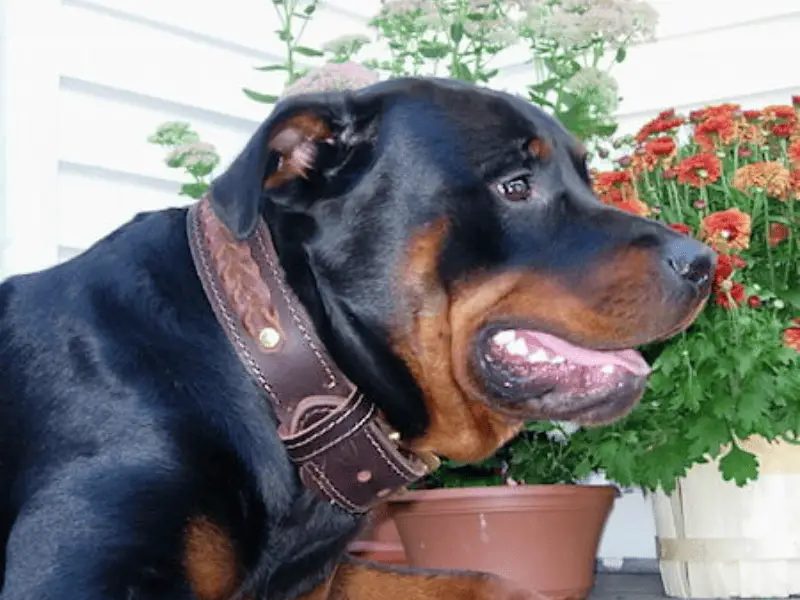
Doing this test regularly helps pet owners find the ideal fit, even if the dog grows or gains/loses weight. If adjustments are needed, owners can tighten or loosen the collar accordingly. This test is important for responsible pet ownership, promoting both safety and comfort.
When performing the “Two-Finger” Test, breed-specific considerations and age-related sizing should be taken into account. This will help to determine whether variations in sizing are needed. An accurately fitted collar provides comfort and contributes to well-being, preventing injuries.
Reference data provides detailed information on specific collars’ sizing charts, helping pet owners select the right size for their pets. Sources like these avoid common sizing mistakes and provide a comprehensive understanding of the best collar options for different breeds. Dog owners can make informed decisions about collar sizes, keeping their pets safe and comfortable.
The “Two-Finger” Test is an established method for determining proper collar fit. It was introduced by pet care professionals who knew how important comfortable and safe collars were. This test has become an essential guideline for dog owners, aiding them in picking the right size collar and protecting their pets.
Proper Fit of the Collar
Achieving a proper fit of a dog collar is essential. It prevents discomfort and potential harm to your pet. Here are the 4 key steps to take:
- Measure Your Dog’s Neck: Use either a cloth seamstress tape measure or a string and rigid ruler for accurate measurements.
- Choose the Correct Size: Refer to size charts from trusted sources like American Pack Dog Collar Size Chart or Mimi Green Dog Collar Sizes.
- Perform the “Two-Finger” Test: Slide two fingers between your dog’s neck and the collar. If it fits snugly, it’s a proper fit. If not, adjust it.
- Make Necessary Adjustments: If too tight, loosen it. If too loose, tighten it.
By following these steps, your pet will be safe and comfortable during activities. Consider other resources for breed-specific advice.
Now, if your dog’s collar is too tight or too loose, don’t worry – get creative! Make it a corset or a loose necklace – fashion choices of dogs we never knew we needed!
What to Do If the Collar Is Too Tight or Too Loose
When a dog collar is either too tight or too loose, you must take action for the pup’s safety and comfort. Here are 3 steps to follow:
- Tight Collar: If the collar is restricting the dog’s neck, loosen it. Pull on the buckle or clasp to make space. Don’t loosen too much though – the collar should be snug.
- Loose Collar: If it slips over easily, tighten it. Pull on the buckle or clasp until there’s no extra space. But don’t tighten too much – this can cause discomfort or breathing problems.
- Get Professional Help: If adjusting doesn’t work, or if you’re not sure how to do it, seek help from a groomer or vet. They know how to fit collars and will guide you to find the right one.
It’s important to check the collar periodically and adjust it if needed. Measure your pup’s neck size with a cloth tape measure or ruler to stay informed of any changes. This way, the collar fits properly, keeping them safe and comfortable during walks.
Factors to Consider in Choosing the Right Size
When choosing the right size for your medium dog collar, there are important factors to consider. In this section, we will explore two key considerations: age and breed. By understanding how these factors play a role in determining the proper collar size, you can ensure the utmost comfort and safety for your furry friend. Remember, finding the perfect fit is essential for your dog’s well-being.
So, let’s dive into the details and make an informed decision for your canine companion.
Age and Breed Considerations
When choosing a dog collar, age and breed are two crucial factors. Puppies and fully grown dogs have different collar sizes due to their changing neck measurements. Plus, certain breeds have necks of different sizes.
To get the right size, it’s helpful to use size charts from reliable brands. These provide measurements and recommendations for different breeds. Note that dogs with larger necks or longer snouts may need special consideration when it comes to the fit of their collar.
For better guidance, consult breed-specific guides or ask experts like vets or experienced dog trainers. They can offer valuable advice on age and breed considerations.
In conclusion, age and breed are key when picking the right collar for your dog. This will ensure comfort and also allow for growth and style.
Sizing for Puppies and Fully Grown Dogs
Sizing for puppies and grown dogs is important when choosing a collar. It must fit properly and comfortably.
Reference data can be used for guidance. The American Pack Dog Collar Size Chart offers sizes in small, medium, and large. It also includes instructions on how to measure the neck for the best fit.
Mimi Green Dog Collar Sizes provides specific neck sizes, weight ranges, and suggested collar sizes for different breeds.
Breed-specific considerations should also be taken into account. Hindquarters Dog Collar Sizing Guide offers recommended collar sizes based on breeds and neck measurements.
By using these sources and considering age, breed, and measurements, pet owners can ensure a comfortable fit that promotes safety for their canine companions.
Breed-Specific Considerations for Collar Sizing
Breed-specific considerations for collar sizing must be taken into account. Each breed has its own neck shape and size. For some, thicker necks or wider heads require a larger size. Longer, slender necks, such as Greyhounds and Whippets, need narrower collars to stay in place. Breeds with thick necks like Bulldogs and Rottweilers may need wider collars for support.
Certain medical conditions can affect neck size too. Brachycephalic breeds with shorter muzzles need adjustable collars. To ensure a safe, comfortable fit, identify your dog’s breed characteristics. This helps you choose the right collar size without causing any discomfort or risk of injury.
Using Reference Data for Sizing Guidance
When it comes to determining the right size for your medium dog collar, using reference data can provide valuable sizing guidance. In this section, we’ll explore the American Pack Dog Collar Size Chart, which will help you find the perfect fit for your furry companion.
Get ready to discover key measurements and references that will ensure your dog’s collar is comfortable and secure.
American Pack Dog Collar Size Chart
The American Pack Dog Collar Size Chart is a great help for dog owners who want to find the right collar size. This chart has sizes for small, medium, and large breeds and neck measurements. By referring to this chart, you can make sure the collar fits properly and is comfortable and safe for your pup.
To make it easier to understand, you can make a table. This table has three columns for collar size, neck measurement range, and suitable breed examples. This way, dog owners can identify the best collar size for their pup’s breed and measurements.
It’s important to remember that each breed may need different collar sizes. So, measure your pup’s neck with a cloth seamstress tape measure or a string and rigid ruler before checking the American Pack Dog Collar Size Chart.
The American Pack Dog Collar Size Chart is not the only resource for collar sizes. The Mimi Green Dog Collar Sizes includes neck sizes, weight ranges, and suggested collar sizes for various breeds. Accurate measurements are essential for a good fit and keeping your pup healthy.
A wrong collar size can be uncomfortable and even dangerous for dogs. The Hindquarters Dog Collar Sizing Guide has collar sizes based on neck measurements and breeds. Choosing the right size is important to keep your pup safe and comfy.
In conclusion, the American Pack Dog Collar Size Chart and other reference sources can help you pick the right collar size for your pet. With these resources and accurate measurements, you can make sure your dog’s collar fits perfectly and is comfortable and safe.
Sizes Available: Small, Medium, and Large
Dog collar sizes come in Small, Medium, and Large. Picking the right size is essential for your pup’s welfare and comfort. The correct size will also give you control on walks and keep them safe. It is necessary to take accurate measurements of your dog’s neck before selecting a collar size.
For help in understanding the different sizes, an informative table is provided below. It has details on the sizes plus the corresponding measurements:
| Größe | Neck Measurement Range |
|---|---|
| Small | 9-14 inches |
| Medium | 13-18 inches |
| Large | 17-27 inches |
By studying this table, you can figure out which size is best for your pup based on their neck measurement.
It’s good to remember that sizes may differ between brands and products. Some companies provide Extra Small or Extra Large to fit dogs outside the standard range. Make sure to check the size guidelines provided by each manufacturer for an accurate fit.
How to Measure Your Dog’s Neck for the Best Fit
It’s key to measure your pup’s neck for the best fit of its collar. Here’s how:
- Use a cloth seamstress tape measure. Gently wrap it around the neck at the base, snug but not too tight or loose.
- If you don’t have a cloth tape measure, use a string and a rigid ruler. Wrap the string & mark where it overlaps. Place it next to a ruler and measure.
- Take note of the measurement in inches or centimeters. This’ll help you choose the right size collar.
- Consider any breed-specific or age-related requirements. Puppies may need smaller collars that can be adjusted as they grow.
- Check American Pack Dog Collar Size Chart or Mimi Green Dog Collar Sizes for guidance.
Measurement is the key to choosing the perfect collar size & providing comfort & safety. Reference sources will help get you on the right leash!
Additional Reference Sources for Collar Sizing
Looking for more reference sources to determine the right dog collar size? Check out the additional information on Mimi Green dog collar sizes, where you’ll find valuable insights and guidance to ensure the perfect fit for your canine companion.
Mimi Green Dog Collar Sizes
Mimi Green knows how essential it is to get the perfect collar size for your pup, so they offer a range of sizes. The sizes are based on neck measurements, weight ranges, and different breed-specific suggestions. To help you find the right size, Mimi Green has a table with the breed, neck size in inches, weight range in pounds, and suggested collar size.
But, you must think of other factors, like breed-specific characteristics, when deciding the size. Some breeds may have thicker necks or bigger Adam’s apples, which means they need a bigger collar than their neck measurement suggests. To get an accurate measurement, use a cloth seamstress tape measure or a string and rigid ruler.
To check if the collar is the right size, use the “two-finger” test. This is making sure there is enough space for two fingers between the collar and the neck. If the collar is too tight, it can hurt or cause discomfort to your dog. But, if it’s too loose, your pup can slip out of it.
Finding the perfect size is like solving a puzzle, and Mimi Green is here to help!
Neck Sizes, Weight Ranges, and Suggested Collar Sizes for Different Breeds
The reference data holds vital details on neck sizes, weight ranges, and collar sizes for different dog breeds. This info is key to helping dog owners choose a proper size for their pet’s collar, based on the breed’s characteristics and measurements.
Have a look at the table below for neck sizes, weight ranges, and collar size suggestions for different breeds:
| Breed | Neck Size (inches) | Weight Range (lbs) | Suggested Collar Size |
|---|---|---|---|
| Lab Retriever | 14-18 | 55-80 | Large |
| Yorkie | 6-8 | 4-7 | Small |
| Bulldogs | 15-24 | 40-50 | Extra Large |
| Pudel | 10-14 | 45-70 | Medium |
Remember, these are just general recommendations; individual variations within a breed may occur. It’s important to use the data as a starting point, and measure the dog’s neck accurately with proper techniques. Seek breed-specific guidelines or consult professionals to take into account any unique breed-specific considerations when selecting collar sizes.
A friend of mine recently experienced difficulty finding the right collar size for her Labrador Retriever. With the help of the reference data’s suggested collar size range, and directions on how to measure the dog’s neck, she was able to find the perfect fitting collar that provided maximum comfort and safety for her pup. The importance of accurate sizing can’t be overstated when it comes to the wellness of our furry friends!
So, remember to measure properly to get the best fit for your pup’s collar – because who wants a necktie when they’re just going for a walk?
Importance of Accurate Measurement for Sizing
Accurate measurement is key when it comes to finding the right size dog collar. It helps keep our four-legged friends safe and comfortable. Properly fitted collars prevent chafing and restricted breathing. It also reduces the risk of strangulation or entanglement.
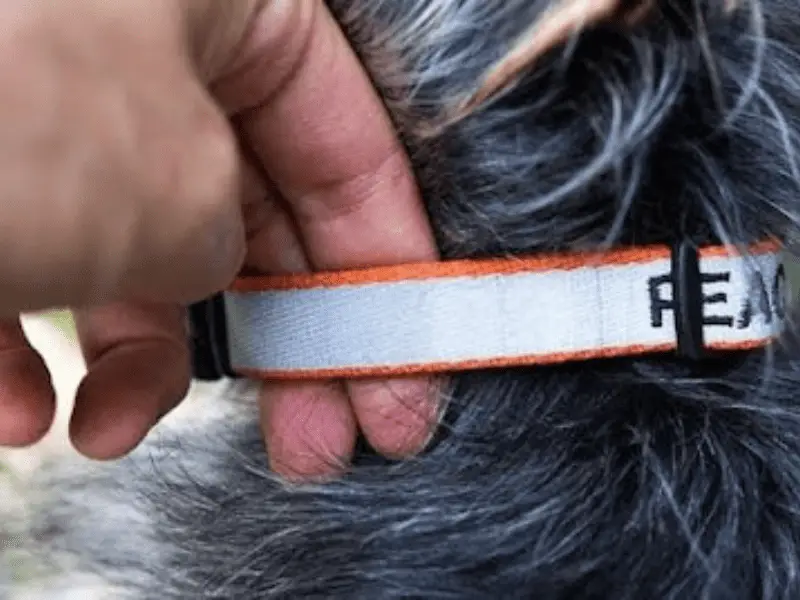
To measure accurately, two methods are mentioned: using a cloth seamstress tape measure or using a string with a ruler. These help get an accurate measurement.
Other factors must be taken into account too – age and breed. Puppies need different sizes as they grow. Certain breeds may have unique proportions or anatomical features that should be considered.
Reference data charts can provide guidance on collar sizes based on measurements. American Pack Dog Collar Size Chart and Mimi Green Dog Collar Sizes are examples of reliable sources. They offer info on neck sizes, weight ranges, and suggested collar sizes for different breeds.
So, accurate measurement is essential for finding the right size collar. It ensures both the safety and comfort of our furry friends. By following proper measuring techniques and taking other factors into account, we can provide dogs with comfortable collars that suit their needs.
Tips for a Comfortable Fit
Finding the right fit for your medium-sized dog collar is essential for their comfort and safety. In this section, we’ll explore tips for achieving a comfortable fit that your furry friend will appreciate. From discussing the various types of dog collars available to highlighting key considerations for sizing, this sub-section provides valuable insights to help you ensure a snug and secure fit for your medium-sized dog.
Types of Dog Collars Available
Dog owners may choose from various types of collars, each designed to suit different pup needs. It’s crucial to understand the options available and select the most suitable one for your furry friend.
For instance, the Flat Collar is the most common type. It’s made of nylon or leather with a buckle or snap. The Martingale Collar, also known as a limited slip, has an extra loop that tightens, but not too much. Harnesses are great for dogs with respiratory issues or neck injuries as they distribute pressure evenly.
Training Collars, such as the choke chain or prong, help correct behavior with gentle pressure around the neck. Electronic Collars deliver electric shocks or vibrations as correction, and should only be used with proper supervision.
Plus, there are specialized types like reflective collars for nighttime safety and GPS-enabled ones for tracking. Every collar has unique benefits based on the dog’s lifestyle.
Safety, comfort, and pup well-being should be prioritized when choosing a collar. It’s also important to consider the dog’s breed and size, as well as individual preferences.
Different Collar Options and Their Suitability for Different Dogs
When it comes to collars for your pup, there are many options designed for different dogs’ needs. Comprehending the different collar options and their appropriateness can help you pick the most fitting one.
Examples include:
- Traditional Buckle Collars – classic buckles closure. Suitable for most dogs, with a secure fit.
- Martingale Collars – ideal for narrow-headed breeds like Greyhounds and Whippets. It tightens when the dog pulls, avoiding choking or pain.
- Head Halters – like the “Gentle Leader,” they provide better control over strong pullers, turning attention towards the owner.
- Harnesses – pressure is distributed over the chest and back, making them suitable for dogs with neck or breathing issues. Also discourages pulling.
- Padded Collars – added comfort for dogs with sensitive skin or necks, preventing irritation or chafing.
Consider your dog’s needs, temperament and size, and any health issues to select the best collar option. Breed-specific sizing guides can also assist in selecting the right one for your furry friend.
Picking the right collar is essential for your dog’s safety, comfort and overall health. By understanding the various collar options and considering your pup’s needs, you can make the perfect choice. Ensure your pup is secure and happy by selecting a collar tailored to their individual characteristics.
Personalization Options for Collars
Personalization of collars is an amazing way for dog owners to give their pet’s accessories a unique twist. Choices like materials, colors, patterns and even personalized words or names can all help show the dog’s personality or the owner’s preferences. Different retailers provide a great range of personalization options.
To understand collar customization further, let us look at Mimi Green Dog Collar Sizes table. It categorizes different breeds based on neck size, weight and suggests collar sizes. This helps owners find the ideal fit for their pet and also provides personalization options like colors and patterns.
We have talked about collar sizing and customization. Still, some retailers offer extra personalization options like charms or tags that can be attached to the collar. These charms can be engraved ID tags, decorative pendants or bells.
To make your dog’s collar exclusive, here are some ideas based on reference data. Embroidery with the pet’s name or any meaningful message onto the collar adds a personal touch and helps identify your pet. Additionally, a collar color that goes with the fur color can improve their look while still maintaining functionality. Also, if your dog has skin allergies, select hypoallergenic materials during customization.
By considering personalization options from reliable sources like Mimi Green Dog Collar Sizes and Hindquarters Dog Collar Sizing Guide, dog owners can find the perfect fit for their furry friends. Comfort, style and functionality – all in one!
Using Retail Guides for Sizing
Using retail guides for sizing is essential when it comes to determining the right medium dog collar size. In this section, we will explore the DogIDs Sizing Guide, which provides valuable insights and tips on finding the perfect fit for your furry friend. With the help of this comprehensive guide, you can ensure that your dog’s collar is not only comfortable but also secure, allowing them to roam and play freely while keeping them safe.
DogIDs Sizing Guide
The DogIDs Sizing Guide is great for dog owners who want to make sure they pick the right collar size. This helpful guide has data in a table format, like “Neck Size,” “Weight Range,” and “Suggested Collar Size.” This way, owners can compare their dog’s measurements to the suggested collar sizes and find the best fit.
The guide also emphasizes accuracy for the comfort and safety of the pup. It provides info to make an informed decision about the collar size. Plus, it has tips to get a comfortable fit. It also covers different types of collars and offers personalized options.
For those who like retail guides, the DogIDs Sizing Guide has advice on selecting the collar size. It includes factors to consider when sizing. With this guide, owners can pick the perfect collar size for their pet and make sure their pup is safe, comfy, and stylish.
How to Choose the Right Size Collar Based on Measurements and Size Ranges
Find the perfect collar size for your pup by following a few easy steps! Here’s how:
- Measure their neck with a cloth seamstress tape measure or string and a ruler. Make a note of the measurement.
- Use the measurement to check sizing charts from reputable sources such as the American Pack Dog Collar Size Chart or Mimi Green Dog Collar Sizes.
- Consider your pup’s age and breed. Puppies may need adjustable collars, while full-grown dogs may benefit from more exact sizing options. Additionally, certain breeds may need special sizing due to their neck shape or size.
- Consider personal preferences and extra features when picking a collar. For example, martingale collars for dogs that slip out of traditional ones, and harnesses for pups with special needs.
- Don’t forget to make it special with name tags or other identification accessories!
- If you’re stuck between two sizes, always choose the larger size for comfort.
By following these steps, you’ll find the perfect fit for your furry friend!
Factors to Consider When Sizing a Collar
Figuring out the best collar size for your pooch is easy – when you consider the following factors!
- Age & Breed: Your pup’s age and breed can affect the size of their collar. Smaller collars are best for puppies, while larger sizes work better for grown dogs. Different breeds may need a different size due to neck shape and size.
- Neck Measurements: Accurate neck measurement is key! Measure the circumference of the neck with a cloth seamstress tape measure or a string and ruler.
- Comfort & Safety: The “two-finger” test can help you determine the right fit. You should be able to fit two fingers between the collar and your dog’s neck without it being too tight or too loose. If it’s too tight or too loose, make adjustments!
Don’t forget to provide your pup with a properly sized collar! Taking age, breed, measurements, and comfort into account is vital for finding the perfect fit. By considering these factors, you can select a size that provides maximum comfort while keeping your pup safe during walks or other activities.
Other Considerations for Collar Sizing
When it comes to determining the right size for your medium dog’s collar, there are a few other considerations to keep in mind. In this section, we’ll explore the hindquarters dog collar sizing guide, which will provide valuable insights on how to measure and fit a collar that ensures both comfort and safety for your furry companion. So, let’s dive into this sub-section and discover the essential tips and techniques for finding the perfect collar size for your medium-sized dog.
Hindquarters Dog Collar Sizing Guide
When it comes to dog collar sizing, the “Hindquarters Dog Collar Sizing Guide” is a great resource. It offers recommendations and info on choosing the right size collar for dogs based on their hindquarters measurements.
For easy reference, a table can be used to outline the recommended collar sizes. It should have columns for breed, neck measurement range and corresponding collar size. This makes it simpler for dog owners to find the right info for their pup and measure their hindquarters accurately.
The guide provides valuable tips on collar sizing. It takes into consideration details related to hindquarters measurements that may not have been mentioned before. By referring to this guide, dog owners can select a collar size that fits perfectly, providing comfort and safety for their pup.
Size counts when it comes to collars; an ill-fitting one could make your pup look silly or worse, escape!
Recommended Collar Sizes for Specific Breeds and Neck Measurements
When selecting the right size collar for your pup, it is important to consider the recommended collar sizes for their specific breed and neck measurements. This will ensure safety and comfort for your doggo. Different breeds have various neck sizes so it’s key to find the correct one that fits securely without causing any discomfort or restriction.

To help find the perfect collar size, the Hindquarters Dog Collar Sizing Guide is a great resource. This provides recommended sizes based on certain breed measurements, allowing owners to pick collars that suit their pet’s needs and reduce any potential risk.
Making a table can be a great way to present this info plainly. Have columns such as Breed, Neck Measurement Range, and Recommended Collar Size. By organizing it like this, owners can easily search for their pup’s breed and neck measurement range to figure out which collar size they need.
Other details regarding collar sizing have been mentioned in articles such as “Understanding Dog Collar Sizing”. This gives guidance on accurately measuring your dog’s neck with things like a cloth seamstress tape measure or a string and rigid ruler.
By thinking of these unique details together with breed-specific suggestions, owners can make informed decisions when picking the right size collar for their four-legged friend. The right size collar ensures both safety and comfort, preventing any harm or discomfort from ill-fitting collars.
It’s like finding the perfect pair of shoes for your pup, just without the complaining when it pinches their neck!
Examples of Breeds and Their Corresponding Collar Sizes
It’s important to consider the collar size needs for different dog breeds. Here are some examples, with reference data:
- Labrador Retriever: Adult Labradors usually need medium or large-sized collars, depending on their neck measurement.
- Poodle: Toy poodles need extra small or small collars, while miniature and standard poodles need medium or large collars.
- Golden Retriever: Golden Retrievers usually require large to extra-large collars.
- Chihuahua: These small dogs usually need extra small or small collars.
Long-necked breeds like Greyhounds may need wider collars. Short-necked breeds such as Bulldogs might benefit from adjustable collars.
A pet owner in the reference data made a mistake when they chose a small collar for their Beagle. Beagles usually need medium-sized collars. This shows how important it is to understand breed-specific sizing when choosing a collar. The pet owner now takes accurate measurements and uses guides to find the right size for comfort and safety.
Finding the right size collar can be tricky. But with these tips, you can have your pup looking great and comfy!
Final Thoughts in Choosing the Right Collar Size
In conclusion, understanding the importance of proper collar sizing for dog safety and comfort, and recapping the key points discussed in this article, will ensure that you find the perfect fit for your medium-sized dog. Remember, a well-fitted collar is crucial for your pet’s well-being and overall happiness.
Importance of Proper Collar Sizing for Dog Safety and Comfort
Choosing the right size of a dog collar is very important for your pet’s safety and comfort. Utilizing the MECE framework to categorize data can help you decide the best fit for your pup. Measure your dog’s neck with a cloth seamstress tape measure or with a string and rigid ruler to accurately determine the size.
Factors like age, breed, and specific measurements should be taken into account when selecting a collar size. Puppies may need smaller collars while fully grown dogs may need larger sizes. Moreover, some breeds may have unique sizing requirements due to their physical attributes. Check for proper fit with the “Two-Finger” test.
Data from American Pack Dog Collar Size Chart and Mimi Green can provide guidance on neck sizes, weight ranges, and suggested collar sizes. For a better fit, consider the DogIDs Sizing Guide and Hindquarters Dog Collar Sizing Guide. Make sure to take breed specifics and individual preferences into account. An ill-fitting collar can result in discomfort or even pose safety hazards.
Recap of Key Points Discussed in the Article.
Recapping the key points discussed in this article:
- The importance of selecting the right-sized dog collar
- The MECE framework
- Understanding how to size a dog’s collar
- Determining the best fit with the “Two-Finger” test
- Age, breed, and other factors to consider
- Reference data for accurate sizing guidance
To wrap it up:
Choosing the correct collar size for a dog is paramount. By following the steps laid out in this article, pet owners can make sure their fur babies have a collar that fits comfortably and safely. With helpful resources like size charts, guides, and measuring techniques, it’s easy to find the perfect size based on age, breed, and neck measurements. When pet owners take all these points into consideration, they can provide their pup with a snug and secure collar that promotes their well-being.
Some Facts About How to Determine Medium Dog Collar Size:
- American Pack dog collars are available in small, medium, and large sizes. To determine the best fit, measure your dog’s neck where the collar will rest.
- Use a cloth seamstress tape measure to measure your dog’s neck. Pull the tape snug but not tight.
- A properly fitting collar should allow you to slide two fingers under it and your dog’s neck.
- The collar should not be tight or loose. It should have a snug fit for safety reasons.

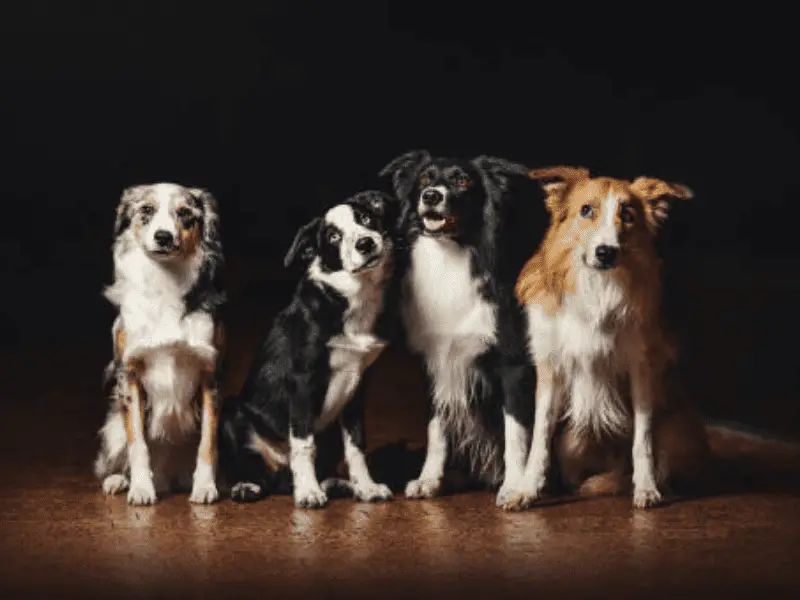
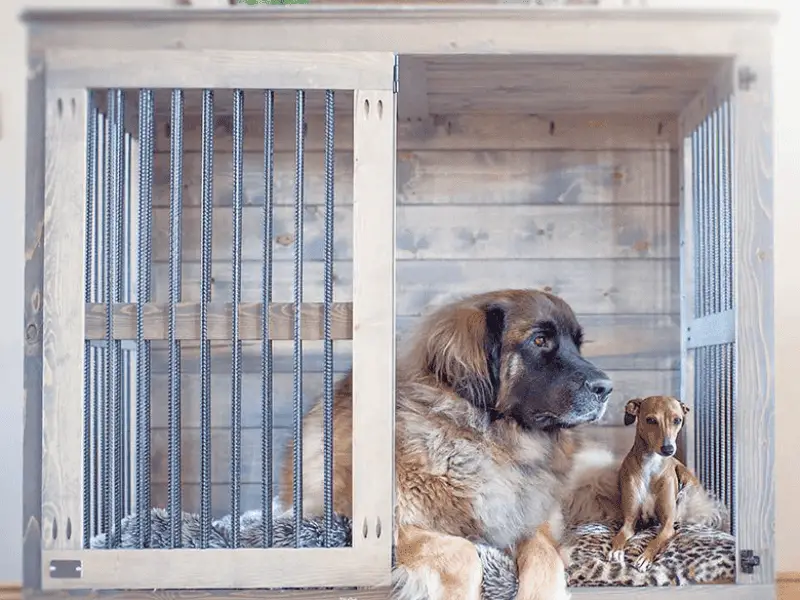
Leave a Reply